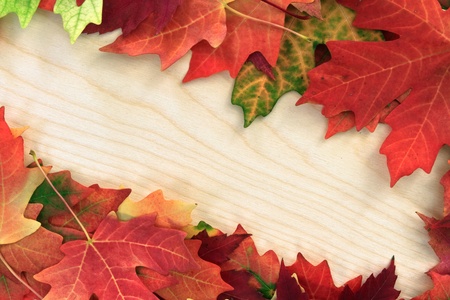Introduction to Autumn Feng Shui in the British Context
Feng Shui, an ancient Chinese practice, centres on harmonising individuals with their environment through the mindful arrangement of space and the thoughtful use of elements such as colour, light, and natural materials. At its core, Feng Shui recognises the cyclical nature of energy—Qi—and how it ebbs and flows with the changing seasons. As autumn arrives, this energetic shift becomes especially pronounced; it is a time traditionally associated with reflection, preparation for rest, and a gradual turning inward.
Within the context of Britain, autumn is marked by distinctive natural phenomena: mists over rolling hills, shorter days punctuated by golden sunlight, and trees ablaze with russets, ochres, and deep greens. These seasonal changes are not only visual cues but also signal shifts in mood and daily rhythms. The British approach to embracing autumn’s palette can be seen in everything from interior design trends to the national love for cosiness—think “hygge” with a distinctly British twist, complete with cups of tea and soft wool blankets.
This article explores how the principles of Feng Shui can be thoughtfully adapted to reflect these unique British characteristics during autumn. By understanding both the traditional concepts of energy flow and the specific qualities of the UK’s seasonal transitions, we can create living spaces that feel balanced, nurturing, and deeply connected to their local environment. Through this lens, colour becomes more than decoration; it is a practical tool for responding to both universal energies and the particular charm of a British autumn.
2. Interpreting British Autumn Colour Palettes
Autumn in the UK is defined by a distinctive and evocative spectrum of colours that shapes both natural landscapes and interior design choices. Identifying quintessential British autumnal hues requires an appreciation for the subtle interplay between tradition and contemporary trends. These palettes often feature rich oxblood reds, reminiscent of aged leather and classic British tailoring; burnt oranges, echoing the fallen leaves carpeting city parks; moss greens, inspired by rain-soaked countryside and ancient woodlands; and golden ochres, capturing fleeting sunlight on historic stonework. Understanding how these shades are used in UK interiors provides valuable insight for anyone wishing to align their living spaces with seasonal shifts through a Feng Shui lens.
Classic and Contemporary Applications
British interiors have long favoured layered, textural approaches to colour, balancing heritage influences with modern sensibilities. In traditional homes—think Georgian townhouses or Victorian terraces—autumnal tones often appear in plush velvets, deep-painted panelling, or patterned wallpapers. Meanwhile, contemporary spaces incorporate these colours through statement furniture, accent walls, or curated accessories, maintaining warmth without overwhelming minimalistic aesthetics.
Key British Autumn Colours and Their Interior Uses
| Colour | Description | Traditional Usage | Modern Adaptation |
|---|---|---|---|
| Oxblood Red | Deep, wine-toned red | Library walls, Chesterfield sofas | Cushions, artwork highlights |
| Burnt Orange | Earthy, muted orange | Drapes, Persian rugs | Throws, accent chairs |
| Moss Green | Saturated green with grey undertones | Wood panelling, dining rooms | Bedding, ceramic vases |
| Golden Ochre | Warm yellow-gold | Lamp bases, wallpaper motifs | Feature wall paint, decorative ceramics |
A Balanced Approach to Seasonal Shifts
The careful integration of these autumnal tones supports not only aesthetic harmony but also emotional well-being—a central aim of Feng Shui practice. By drawing from both the established visual heritage and newer design movements in the UK, one can curate spaces that resonate with the season’s energy while remaining distinctly British in character.

3. The Psychological and Energetic Impact of Colour
In the context of autumn Feng Shui, colour plays a significant role in shaping both our psychological state and the energetic flow within British homes. Autumnal hues—think ochres, deep reds, mossy greens, and muted golds—carry a warmth that can counterbalance the often-grey British skies and shorter daylight hours. Scientific studies consistently highlight that warm colours tend to evoke comfort and security, while cooler tones may foster calmness but also, if overused during darker months, can accentuate feelings of isolation.
Considering the unique British climate, where cloud cover and rain are frequent companions from September through November, these rich seasonal shades become more than mere decoration. They are tools to uplift mood and sustain energy. With less natural light entering our living spaces, walls painted in deep terracotta or soft amber reflect what little sunshine there is, making rooms feel brighter and more inviting. This subtle manipulation of light and colour is deeply entwined with the principles of Feng Shui: it encourages positive chi (energy) circulation by creating an environment that feels both nurturing and dynamic.
Culturally, the British approach to colour in interiors has evolved alongside a love for tradition and a cautious embrace of bold palettes. While some prefer understated neutrals rooted in Georgian or Victorian influences, many now incorporate richer autumnal tones as a nod to heritage and as a practical response to the season’s gloom. Cushions in burnt orange or throws in forest green offer not only visual interest but also emotional warmth—a subtle psychological boost during colder months. Ultimately, choosing colours attuned to both seasonal shifts and local attitudes can significantly influence how energised or restful a home feels throughout autumn.
4. Practical Integration: British Homes and Seasonal Shifts
Translating autumnal Feng Shui concepts into the context of British homes requires a thoughtful approach, especially considering the unique architectural features and living habits across the UK. British interiors often feature bay windows, fireplaces, and smaller, cosier rooms compared to open-plan designs seen elsewhere. To harmonise with both the season and traditional British aesthetics, consider layering textures and colours through soft furnishings, accessories, and natural elements that reflect local palettes.
Soft Furnishings: Layering for Warmth and Energy Flow
Autumn in the UK brings shorter days and cooler temperatures, making tactile comfort a priority. Opt for throws, cushions, and rugs in warm hues like deep ochre, russet, or forest green. These colours not only echo the seasonal landscape but also help support the grounding energy promoted by Feng Shui during this time. For heritage properties with muted schemes or period detailing, introduce subtle patterns inspired by nature—think leafy motifs or tartan prints—to maintain visual harmony without overwhelming classic features.
Accessories: Balancing Modern and Traditional Accents
Accessorising is a practical way to refresh interiors in line with autumn’s shifting energies. Brass candleholders, ceramic vases filled with dried foliage, and textured lampshades offer both light and warmth. In typical British room layouts—often compact or with distinct zones—it’s wise to curate accessories sparingly. Below is a table offering suggestions tailored to common British spaces:
| Room Type | Recommended Accessories | Suggested Colours/Materials |
|---|---|---|
| Lounge/Sitting Room | Wool throws, velvet cushions, mantelpiece décor | Burgundy, olive green, copper accents |
| Dining Area | Candle clusters, seasonal table runners | Tawny orange, mustard yellow, brass |
| Bedroom | Knit blankets, bedside lamps with warm bulbs | Plum tones, chestnut brown, wood finishes |
Natural Elements: Bringing the Outdoors In
Embracing nature is central to both Feng Shui and British seasonal living. Incorporate potted plants like ivy or ferns on windowsills to purify indoor air and channel vibrant qi (energy). Collecting conkers or acorns during countryside walks provides organic décor while connecting your space to local landscapes. For those in urban flats or terraces, consider bowls of seasonal fruit—apples or pears—as edible displays that reinforce abundance.
Adapting to Architectural Nuances
Given the diversity of housing stock in Britain—from Victorian terraces to modern builds—adapting these principles means respecting each home’s character. Use lighter textiles in rooms with smaller windows to maximise available daylight; in period properties with high ceilings or ornate cornices, opt for earth-toned drapes to anchor energy without detracting from original features.
Sensitivity to British Tastes
Ultimately, integrating autumnal Feng Shui into British interiors hinges on subtlety and balance. By selecting elements that complement existing décor—rather than competing with it—you can create spaces that feel both seasonally resonant and uniquely personal.
5. Case Studies: Real-Life British Applications
Before-and-After: A Victorian Terrace in Manchester
In this first example, a classic Victorian terrace in Manchester underwent a subtle transformation to incorporate autumnal Feng Shui principles. Originally painted in cool greys and off-whites, the living room felt somewhat stark and uninviting as autumn approached. By introducing warm ochres and muted russet accents—such as a burnt orange throw and mustard-hued cushions—the space was made to feel cosier while still respecting the period features. A feature wall painted in earthy taupe provided a grounding effect, harmonising with the original dark wood floors. The owners reported an immediate sense of warmth and comfort, especially when entertaining friends on chilly evenings.
Modern Flat in London: Small Space, Big Impact
A compact flat in East London presented another challenge: how to infuse seasonal energy without overwhelming the limited space. Here, the solution was to use accessories rather than full-scale redecoration. Deep green velvet curtains were added to the main window to evoke the richness of autumn foliage, complemented by brass candleholders and copper-toned vases sourced from local markets. The resident also incorporated houseplants such as ferns and ivy, which not only softened the urban setting but also supported positive Qi flow according to Feng Shui principles. This approach allowed for flexibility and respected both rental limitations and a distinctly Londoner flair for mixing vintage finds with modern pieces.
Cotswold Cottage: Blending Tradition with Autumnal Harmony
In rural Gloucestershire, a Cotswold stone cottage showcased how historic architecture can be enriched with seasonally mindful design. The owners opted for heritage paint colours—sage green and muted pumpkin—to refresh their kitchen cabinetry, while natural wool throws in berry shades dressed the armchairs by the fireplace. An antique oak sideboard was repurposed as a focal point for seasonal displays of gourds and dried hydrangeas, echoing both Feng Shui’s emphasis on nature and the local tradition of celebrating harvest time. These gentle shifts created a seamless blend between British rural charm and Chinese design philosophy.
Lessons Learned from British Homes
Across these case studies, several common threads emerge: respect for original architectural features, thoughtful layering of colour through textiles and accessories, and an appreciation for natural materials that resonate with both British tastes and Feng Shui wisdom. Whether working within historic or contemporary settings, these examples demonstrate that it is possible to celebrate autumn’s energy using locally relevant palettes—enhancing both wellbeing and a sense of place.
6. Sustainability and Local Sourcing in Autumnal Decor
Within the context of autumn Feng Shui, sustainability and local sourcing are increasingly relevant themes, especially across the UK where eco-conscious living is gaining ground. Embracing British-made or locally sourced materials not only reduces environmental impact but also resonates with the principles of Feng Shui, which emphasise harmony with one’s environment. By choosing decor that reflects regional craftsmanship—such as woollen throws from Yorkshire mills, hand-thrown pottery from Devon, or reclaimed wood furniture crafted in Scotland—we root our homes in a sense of place and support local communities.
This approach aligns with current British trends that champion provenance and authenticity. Incorporating locally sourced autumnal elements, such as dried heather, foraged branches, or artisan ceramics in earth tones, creates interiors that feel both grounded and meaningful. These choices echo Feng Shui’s advocacy for natural textures and colours, enhancing positive energy flow while minimising environmental footprint.
Moreover, by prioritising longevity over fleeting fashion, sustainable decor pieces become integral to an ongoing cycle of use and appreciation. This slow-living ethos complements the seasonal shifts celebrated in Feng Shui: as we adapt our spaces for autumn, integrating British-made accents ensures our homes are not only visually harmonious but also ethically attuned to both our landscape and our values.


